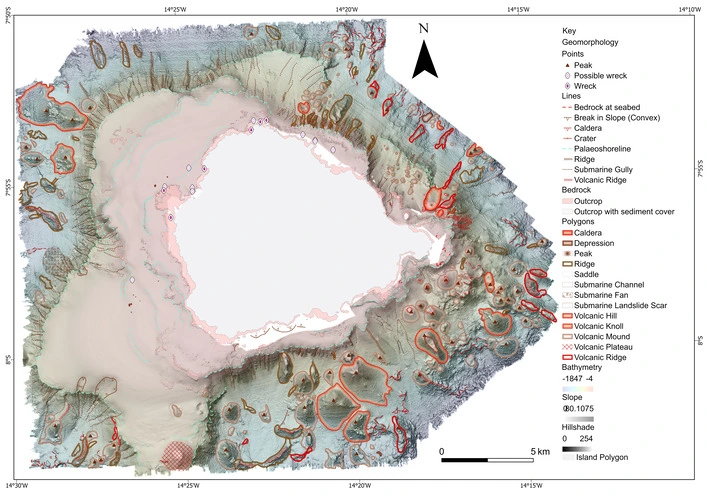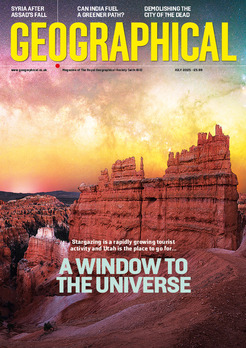
British Geological Survey maps are poised to aid conservation of one of the largest marine-protected areas in the world
By
A new set of maps produced by the British Geological Survey has offered the first detailed insights into one of the largest marine-protected areas in the world, the Ascension Island Marine Protected Area (MPA).
Enjoying this article? Check out our related reads:
Stretching for 445,000 square kilometres in the South Atlantic Ocean, the MPA is home to numerous endemic species and a plethora of both deep sea and open ocean habitats – many of which are yet to be explored. The actual Ascension Island itself also features the second-largest breeding population of green turtles in the Atlantic, as well as more than half a million nesting seabirds.
Since 2019, the Ascension Island MPA has been safeguarded from activities such as large scale commercial fishing and mineral extraction – as well as having restrictions imposed on waste discharge – but it still faces a pertinent threat from human-induced development and climate change.
That’s why researchers hope these newly created maps – constructed using high-resolution surveys, depth and seabed composition data alongside specialised video and photography – will help to continue conserving such a unique region in the long term and ensure safer navigation for future exploration.
Dubbed a ‘significant milestone’ by BGS marine geoscientist Catriona Macdonald, the findings detailed within the maps were extensive, ranging from discoveries of features such as seamounts, submerged lava flows, ridges and submarine landslides to more detailed understandings of the exact composition of sediment in nearshore areas. Some data was also recorded in areas previously unexplored by historic surveys.
‘Collecting data in such a remote and exposed location was a challenge, but an absolute privilege and pleasure,’ said BGS Project Manager and Senior Surveyor Rhys Cooper.
Collectively, this information will provide further insight into the multiple ecosystems within the MPA’s waters.

To further ensure the maps contribute toward the MPA’s betterment, the BGS also provided training to the Ascension Island Government (AIG) on how to modify and add new data as more knowledge becomes available. The maps will continue to be used by the government for future generations.
‘AIG are excited to have access to such high-quality bathymetry and habitat maps,’ said Director of Conservation and Fisheries of the Ascension Island Government Tiffany Simpson. ‘They will be transformative in our nearshore research and monitoring and allow for much more evidence-based conservation management.’




